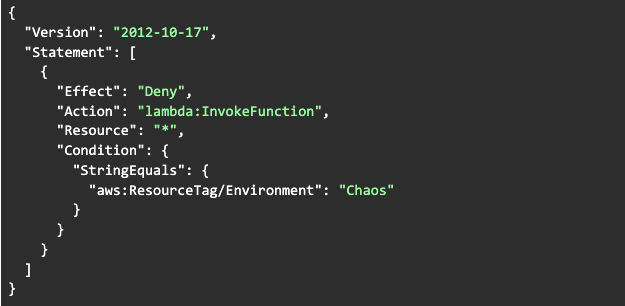The Day Our Serverless Dream Turned into a Nightmare
It was 3 PM on a Tuesday. Our “serverless” order processing system — built on AWS Lambda and API Gateway — was humming along, handling 1,000 transactions/minute. Then, disaster struck. A sudden spike in traffic caused Lambda timeouts, API Gateway threw 5xx errors, and customers started tweeting, “Why can’t I check out?!”
The post-mortem revealed the harsh truth: we’d never tested failure scenarios. Our “resilient” serverless setup had no fallbacks, retries, or plans for chaos.
That’s when I discovered chaos engineering — the art of intentionally breaking things to build unbreakable systems. In this guide, I’ll show you how to use AWS Fault Injection Simulator (FIS) to sabotage your Lambda functions, handle failures gracefully, and sleep soundly knowing your system can survive anything.
Chaos Engineering 101: Why Break What Isn’t Broken?
Chaos engineering is like a fire drill for your code. Instead of waiting for disasters, you proactively simulate failures to:
- Uncover hidden weaknesses (e.g., Lambda timeouts, cold starts).
- Validate recovery strategies (retries, fallbacks, circuit breakers).
- Build team confidence (because “tested” beats “hoped”).
Serverless chaos challenges:
- No servers to kill, but Lambda can throttle, timeout, or crash.
- Dependencies (DynamoDB, SQS) can fail silently.
- Stateless functions require new failure modes.
Step 1: Simulating Lambda Chaos With AWS FIS
AWS Fault Injection Simulator (FIS) is your chaos playground. While FIS doesn’t natively support Lambda yet, we can hack it using IAM policies and resource tagging.
Example: Simulating Lambda Throttling
Goal
Force Lambda to return TooManyRequestsException.
Step 1
Tag your Lambda function for targeting:
aws lambda tag-resource --resource arn:aws:lambda:us-east-1:123456789:function:OrderProcessor\
Step 2
Create an IAM policy that denies lambda:InvokeFunction:

Step 3
Attach the policy to a role/user during the experiment.
Result
API Gateway calls to this Lambda will fail with 403 Forbidden, mimicking throttling.
Step 2: Handling Retries and Timeouts
Lambda Configuration
1. Set Timeouts
Always lower than API Gateway’s timeout (29 seconds max). // AWS SDK v2:
//Set timeout to 10 seconds
LambdaClient lambdaClient = LambdaClient.builder()
.overrideConfiguration(ClientOverrideConfiguration.builder()
.apiCallTimeout(Duration.ofSeconds(10))
.build())
.build();2. Retry Strategies
Use exponential backoff.
RetryPolicy retryPolicy = RetryPolicy.builder()
.numRetries(3)
.backoffStrategy(BackoffStrategy.defaultExponentialDelay())
.build();3. API Gateway Fallbacks
Configure a Mock Integration as a fallback when Lambda fails:
x-amazon-apigateway-integration:
uri: arn:aws:apigateway:us-east-1:lambda:path/2015-03-31/functions/arn:aws:lambda:us-east-1:123456789:function:FallbackHandler/invocations
responses:
default:
statusCode: "200"
passthroughBehavior: when_no_templates
requestTemplates:
application/json: '{"statusCode": 200}'
timeoutInMillis: 5000Fallback response:
{
"status": "Service unavailable. Try again later."
}Step 3: Building a Self-Healing Lambda Function (Java Example)
The Sabotage Function
A Lambda that fails randomly to simulate instability:
public class ChaosLambdaHandler implements RequestHandler {
private final Random random = new Random();
@Override
public APIGatewayProxyResponseEvent handleRequest(
APIGatewayProxyRequestEvent input, Context context
) {
// Fail 30% of the time
if (random.nextDouble() The Recovery Strategy
1. Retry with backoff:
public APIGatewayProxyResponseEvent handleRequest(
APIGatewayProxyRequestEvent input, Context context
) {
int retries = 0;
while (retries 2. Fallback to SQS queue:
private void sendToDeadLetterQueue(String message) {
SqsClient sqsClient = SqsClient.create();
SendMessageRequest request = SendMessageRequest.builder()
.queueUrl("https://sqs.us-east-1.amazonaws.com/123456789/OrderDeadLetterQueue")
.messageBody(message)
.build();
sqsClient.sendMessage(request);
}Case Study: Breaking an Order Processor on Purpose
Scenario
A serverless order API processing $10k/hour.
Chaos Experiment
- Inject throttling: Using AWS FIS, deny Lambda invocations for 5 minutes.
- Simulate timeouts: Configure Lambda timeout to 1 second (too short for processing).
Observed Failures
- 40% of requests failed with 503 Service Unavailable.
- Retries overwhelmed the system, causing cascading failures.
Fixes Implemented
- Circuit breaker: Stop retrying after three failures.
- Fallback to cached data: Serve stale order statuses from DynamoDB during outages.
- Load shedding: Reject non-critical requests (e.g., analytics) during high load.
Outcome
- 99% of requests succeeded even during chaos experiments.
- Mean time to recovery (MTTR) dropped from 15 minutes to 30 seconds.
FAQ: Chaos Engineering for Serverless Newbies
Q: Is chaos engineering safe for production?
Q: How do I monitor chaos experiments?
- A: CloudWatch Alerts + X-Ray traces. Track:
- ThrottledRequests (Lambda)
- 5xxErrorRate (API Gateway)
- ApproximateAgeOfOldestMessage (SQS dead-letter queues)
Q: What’s the biggest serverless chaos risk?
Golden Rules of Serverless Chaos
- Start small. Break one thing at a time (e.g., single Lambda).
- Automate recovery. Retries, fallbacks, and circuit breakers are mandatory.
- Learn and iterate. Every failure is a lesson.
Conclusion: Embrace the Chaos
Chaos engineering isn’t about breaking things for fun — it’s about knowing your system won’t break when it matters. By stress-testing your Lambda functions, designing for failure, and embracing tools like AWS FIS, you’ll build serverless apps that survive real-world storms.
Now, go break something — on purpose.









